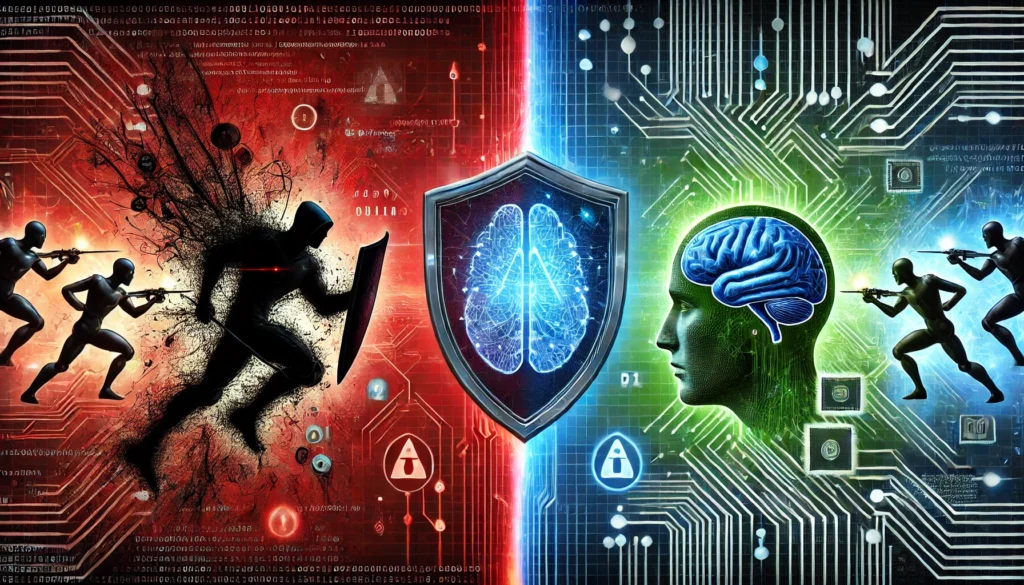In today’s digital world, cybersecurity is more critical than ever. With increasing cyber threats and attackers using advanced technologies, generative AI (GenAI) is now at the forefront of the cybersecurity landscape. This groundbreaking technology is being utilized by both attackers and defenders, leading to an ever-evolving competition. As organizations integrate AI into their operations, both opportunities and challenges arise. In this article, we explore how generative AI is changing the cybersecurity landscape and what it means for both sides.
What is Generative AI in Cybersecurity?
Generative AI refers to artificial intelligence capable of creating content, such as text, images, and even software code. It plays a pivotal role in cybersecurity by enhancing both cyber attacks and cyber defenses. As organizations increasingly adopt AI technology, they must prepare for the risks that come with it, including more sophisticated threats from cybercriminals.
The Dual Role of Generative AI in Cybersecurity
Generative AI is a double-edged sword, providing tools to both attackers and defenders in the cybersecurity arms race.
How Attackers Use Generative AI
Generative AI offers numerous advantages for cybercriminals:
- Faster Phishing Campaigns: Attackers can craft highly convincing phishing emails, making it easier to trick users into sharing sensitive information.
- Exploitation of Vulnerabilities: AI allows attackers to identify and exploit zero-day vulnerabilities, software bugs that haven’t been discovered or patched by developers.
- Malware Generation: Attackers can now generate malware more quickly and efficiently, automating the process and making attacks more scalable.
How Defenders Use Generative AI
On the other hand, defenders also gain significant advantages from AI technology:
- Real-Time Threat Detection: Generative AI analyzes large amounts of data to identify unusual patterns (anomalies) that may indicate a cyber threat.
- Automated Response: AI can automatically respond to detected threats, reducing the window of opportunity for attackers to execute their plans.
- Enhanced Efficiency: Automating routine cybersecurity tasks, such as malware analysis and incident response, frees up time for experts to focus on more complex challenges.
Increasing Complexity in Cybersecurity with Generative AI
As more organizations integrate AI into their systems, the complexity of cybersecurity challenges grows. A report by the World Economic Forum predicts that in the next two years, attackers will maintain an advantage over defenders. This concern is echoed by Prathima Kasagaar, a cybersecurity leader at Accenture, who warns that the rapid adoption of AI tools presents both opportunities and risks for organizations.
AI is Not a Complete Solution
Despite the power of AI, it is not a silver bullet for cybersecurity. According to Balaji Rao, Vice President at Commvault, technology alone cannot solve all cyber threats. Human expertise remains essential. Cybersecurity professionals need to work alongside AI to maximize its effectiveness. They must also consider ethical concerns related to AI, such as data privacy and bias.
Skills Cybersecurity Experts Need to Develop
The rise of generative AI in cybersecurity demands that professionals upgrade their skill sets. Key skills that are becoming essential include:
- Proficiency in AI and Machine Learning: Security professionals must understand how AI and machine learning (ML) work, as well as how to use data analysis to detect threats.
- AI Security Frameworks: Experts should be familiar with frameworks that protect AI models and systems from cyberattacks.
- Cloud Security: As more organizations move to cloud computing, understanding cloud security is essential for mitigating vulnerabilities in cloud environments.
- Penetration Testing and AI Forensics: Cybersecurity experts should develop skills in ethical hacking (penetration testing) and AI forensics, which involves investigating and responding to AI-driven attacks.
AI for Cybersecurity: A Two-Pronged Approach
Sudhakar Singh, Chief AI Security Officer at SAP, outlines a two-pronged approach to using AI in cybersecurity:
- Security for AI: This involves safeguarding AI systems themselves from cyber threats. For instance, attackers could manipulate the data used by AI systems to make incorrect decisions.
- AI for Security: AI can be used to strengthen existing cybersecurity measures, including improving threat detection, automating responses, and predicting potential breaches before they occur.
By focusing on both securing AI and using AI to enhance cybersecurity, organizations can better protect their digital assets.
Ethical Considerations in Generative AI and Cybersecurity
As AI becomes more integrated into cybersecurity strategies, ethical considerations are becoming more important. Professionals must ensure that AI systems respect privacy, avoid biases, and remain transparent. Samir Kumar Mishra from Cisco points out that addressing these concerns is just as important as mastering the technical aspects of AI.
Future Trends in Cybersecurity with Generative AI
While attackers may seem to have an advantage with AI in the short term, the long-term outlook for defenders is promising. AI’s ability to enhance threat detection and response times could eventually level the playing field. The future of cybersecurity will depend on the ability of professionals to adapt to AI technologies while keeping ethics at the forefront of their efforts.
Conclusion: Preparing for the Future of Cybersecurity
Generative AI is changing the cybersecurity landscape, creating both opportunities and challenges for organizations. While attackers can use AI to enhance their cyberattacks, defenders can also leverage AI to improve their defenses. The future of cybersecurity will depend on the ability of professionals to master AI tools, address ethical concerns, and continue evolving with this rapidly changing technology. By focusing on both technology and human expertise, organizations can strengthen their defenses in the fight against cyber threats.


